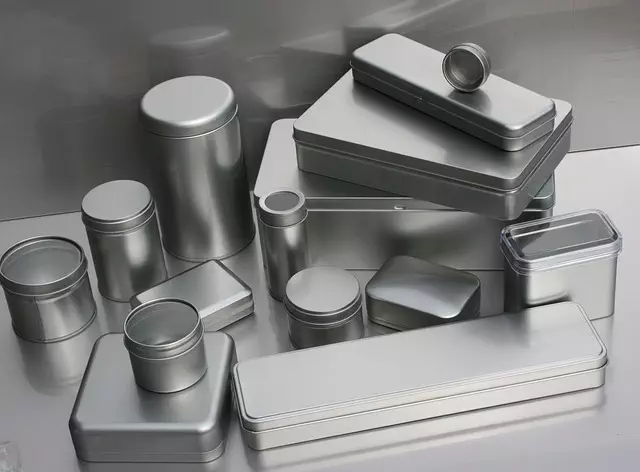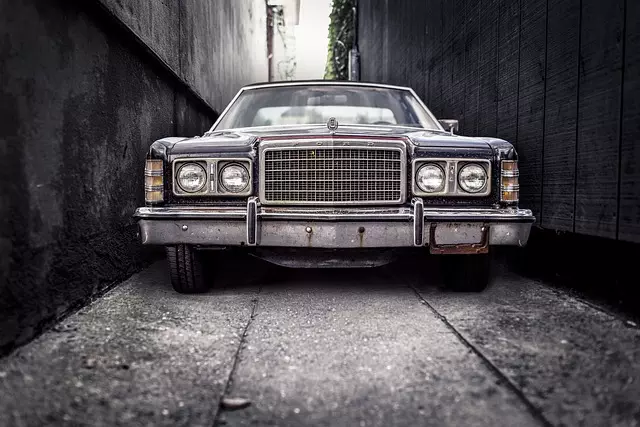In Toledo, Ohio, a city renowned for its automotive manufacturing legacy, a transformative approach to sustainable packaging design for electric vehicles (EVs) is taking shape. This innovative sector is not only pioneering eco-friendly designs using recyclable and biodegradable materials but also setting industry standards in sustainability, positioning Toledo as a green leader in the global EV market. The city's engineers are at the forefront of integrating advanced safety features into EV design, ensuring that critical components like batteries and motors are protected while meeting stringent safety standards. They are mastering the art of battery packaging, focusing on modular systems that allow for different battery sizes to be integrated efficiently without compromising vehicle space or performance. This approach not only enhances safety but also drives down manufacturing costs, making EVs more accessible and competitive. The collaborative efforts in Toledo are shaping the future of automotive packaging design for electric vehicles, emphasizing a balance between technological advancement and environmental responsibility.
Embark on a journey through the evolving landscape of automotive packaging design, with a spotlight on Toledo, Ohio’s pivotal role in shaping the future of electric vehicles (EVs). This article delves into the innovative use of materials and cutting-edge methods that are redefining how EV batteries are packaged. It emphasizes the critical intersection of sustainability and design within this sector, highlighting how eco-conscious practices are not just beneficial but essential for the industry’s advancement. Furthermore, it explores the integration of advanced safety features into the packaging design process, ensuring both occupant and environmental protection. Ahead, we will also examine optimized space and efficiency solutions that promise to revolutionize battery packaging for EVs. Join us as we review a case study showcasing Toledo’s leading practices and breakthroughs in automotive packaging design for electric vehicles.
- Innovative Materials and Methods in Toledo Ohio's Automotive Packaging Design for Electric Vehicles
- The Role of Sustainability in Automotive Packaging Design within the Electric Vehicle Industry
- Advanced Safety Features Integrated into the Automotive Packaging Design Process
- Optimizing Space and Efficiency: The Future of Electric Vehicle Battery Packaging Solutions
- Case Study: Pioneering Automotive Packaging Design in Toledo, Ohio: A Look at Leading Practices and Breakthroughs
Innovative Materials and Methods in Toledo Ohio's Automotive Packaging Design for Electric Vehicles

In Toledo, Ohio, the automotive packaging design sector is undergoing a significant transformation, particularly in the context of electric vehicles (EVs). Local engineers and designers are pioneering innovative materials and methods that not only meet the unique demands of EV batteries but also prioritize sustainability. These advancements are crucial for protecting sensitive electronic components while ensuring the safety and efficiency of the vehicles. The region’s manufacturers are leveraging cutting-edge composites, lightweight alloys, and advanced thermoplastics to create packaging solutions that are both durable and adaptable to different battery configurations. This commitment to excellence in automotive packaging design in Toledo is setting new standards for the industry, positioning the city as a hub of progressive EV technology.
The collaboration between local universities and industry leaders has been instrumental in driving innovation in automotive packaging design for electric vehicles in Toledo. The fusion of academic research with real-world applications is leading to breakthroughs that are reshaping the landscape of EV component protection. These efforts not only enhance the performance and longevity of EVs but also contribute to a more sustainable future by reducing material waste and improving recyclability. The combination of Toledo’s manufacturing prowess with its forward-thinking approach to sustainable packaging design is creating a ripple effect, influencing the broader automotive industry to adopt greener practices and materials.
The Role of Sustainability in Automotive Packaging Design within the Electric Vehicle Industry

The integration of sustainability in automotive packaging design within the electric vehicle industry is a critical factor that has gained significant attention in recent years, particularly in regions like Toledo, Ohio, which are pivotal in the automotive sector. As electric vehicles (EVs) continue to gain market share, the demand for specialized packaging solutions that protect these sophisticated and valuable components during transportation without compromising their environmental footprint is paramount. In Toledo, a city with a rich history in automotive manufacturing, companies are at the forefront of developing eco-friendly packaging designs that not only safeguard the integrity of EV parts but also align with the industry’s commitment to reducing its ecological impact. These innovative solutions often utilize recyclable and biodegradable materials, which reduce waste and the reliance on non-renewable resources. The focus on sustainability in automotive packaging design is not only beneficial for the environment but also positions companies as leaders in a market that increasingly values sustainable practices. By adopting cutting-edge designs and materials, Toledo’s automotive industry is setting a standard for the rest of the world to follow, ensuring that the transition to electric mobility is both efficient and responsible.
Advanced Safety Features Integrated into the Automotive Packaging Design Process

In the realm of automotive engineering, the integration of advanced safety features within the automotive packaging design process is a critical aspect that underscores the evolution of electric vehicles (EVs). Toledo, Ohio, stands as a testament to this integration, where innovative design solutions are not only envisioned but also meticulously implemented. The city’s automotive industry expertise has led to significant advancements in how safety systems are incorporated into the packaging design of EVs. Designers and engineers work in tandem to ensure that the placement of batteries, motors, and other critical components does not compromise the vehicle’s safety or performance. This often involves strategic compartmentalization to protect occupants in the event of a collision, as well as the integration of sensor arrays that enhance the vehicle’s ability to detect and respond to potential hazards. The result is a robust structure that aligns with stringent safety standards while accommodating the unique requirements of electric propulsion systems.
The design process in Toledo, Ohio, exemplifies a holistic approach where automotive packaging design for EVs goes beyond mere physical protection. It encompasses the integration of active and passive safety features such as advanced airbag systems, reinforced frames, and energy absorption materials that are specifically tailored to the characteristics of electric vehicles. This specialized attention ensures that the vehicle’s structure can endure the rigors of modern road conditions while providing a safe environment for passengers. The focus on innovative packaging design not only enhances safety but also optimizes space utilization, ensuring that EVs can offer a range of features and amenities without compromising on critical safety aspects or battery capacity. This forward-thinking approach positions Toledo as a leader in the evolution of electric vehicle safety, showcasing how automotive packaging design can be both a protective measure and a catalyst for advancement in the industry.
Optimizing Space and Efficiency: The Future of Electric Vehicle Battery Packaging Solutions

In the burgeoning field of electric vehicle (EV) technology, the optimization of space and efficiency within battery packaging remains a critical area of innovation. The automotive packaging design sector in Toledo, Ohio, is at the forefront of this evolution, where engineers and designers are rethinking how batteries are integrated into vehicle architecture. These experts are leveraging advanced materials and novel configurations to maximize energy density while ensuring the safety and longevity of EV powertrains. The focus on modular and scalable battery systems allows for greater flexibility in vehicle design, accommodating various battery sizes and shapes without compromising on cabin or cargo space. This adaptability is essential for meeting the diverse needs of consumers and the stringent requirements of different vehicle models. Furthermore, the optimization of battery packaging not only enhances vehicle performance but also reduces manufacturing costs, making EVs more accessible and competitive in the broader automotive market. The collaborative efforts of Toledo’s automotive packaging design community contribute significantly to this shift towards a more sustainable transportation future, where efficiency and space utilization are paramount. As the industry continues to advance, the integration of cutting-edge design techniques and materials promises to redefine the landscape of EV battery packaging, setting new benchmarks for performance, safety, and cost-effectiveness.
Case Study: Pioneering Automotive Packaging Design in Toledo, Ohio: A Look at Leading Practices and Breakthroughs



